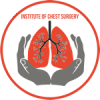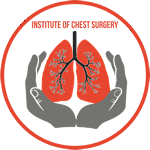The mediastinum, a central compartment of the thoracic cavity, houses various vital structures that perform essential functions to sustain life. Among its divisions, the posterior mediastinum is situated behind the heart and extends from the pericardium to the diaphragm. This region is home to several critical anatomical components that contribute to various bodily functions. In this comprehensive blog post, we will delve into the functions of the structures within the posterior mediastinum, highlighting their significance in supporting respiratory, circulatory, and nervous systems, as well as other essential bodily processes.
1. Descending Thoracic Aorta
The descending thoracic aorta, a large blood vessel, plays a central role in the circulatory system. It receives oxygenated blood from the heart’s left ventricle and distributes it to various organs and tissues throughout the body. As blood flows through the descending thoracic aorta, it provides essential nutrients and oxygen necessary for cellular function and removes waste products, contributing to overall metabolic balance.
Function:
- Distributes oxygenated blood to various body parts.
- Facilitates nutrient and gas exchange within tissues.
- Supports systemic circulation.
2. Thoracic Duct
The thoracic duct is the largest lymphatic vessel in the body and serves as a vital component of the lymphatic system. It is responsible for collecting lymph, a fluid containing white blood cells and waste products, from the lower body, left upper limb, and left side of the head and neck. The thoracic duct then transports this lymph back into the venous system, aiding in immune system function and waste removal.
Function:
- Drains lymph from the lower body, left upper limb, and left side of the head and neck.
- Assists in maintaining fluid balance and tissue health.
- Contributes to immune system function by carrying lymphocytes and antibodies.
3. Azygos Vein
The azygos vein is a crucial venous vessel that assists in the deoxygenated blood return to the heart. It collects blood from various parts of the thoracic and abdominal walls, including the posterior mediastinum. The azygos vein then transports this deoxygenated blood to the superior vena cava, which delivers it to the right atrium of the heart for reoxygenation.
Function:
- Drains blood from the thoracic and abdominal walls.
- Supports venous return to the heart.
- Contributes to the proper functioning of the cardiovascular system.
4. Hemiazygos Vein
The hemiazygos vein is a companion to the azygos vein, aiding in venous drainage from the lower posterior thoracic wall. It collects blood from the left side of the vertebral column, which the azygos vein does not cover, and channels it to the azygos vein for eventual return to the heart.
Function:
- Drains blood from the left side of the vertebral column.
- Collaborates with the azygos vein to ensure proper venous drainage from the posterior thoracic wall.
5. Accessory Hemiazygos Vein
The accessory hemiazygos vein is another complementary vessel to the azygos and hemiazygos veins, contributing to the efficient drainage of venous blood from the posterior thoracic region. It collects blood from the left lower posterior thorax and connects with the hemiazygos vein, facilitating its return to the azygos vein.
Function:
- Drains blood from the left lower posterior thorax.
- Assists in the proper venous drainage of the posterior mediastinum.
6. Vagus Nerve (Cranial Nerve X)
The vagus nerve, or cranial nerve X, is the longest and most complex of the cranial nerves. It originates in the brainstem and extends down through the posterior mediastinum and beyond, innervating various organs and structures in the thorax and abdomen. The vagus nerve is a critical component of the parasympathetic nervous system, responsible for promoting rest and digest functions and regulating involuntary bodily processes.
Function:
- Innervates organs in the thorax and abdomen, including the heart, lungs, and digestive organs.
- Controls parasympathetic functions, such as slowing heart rate and promoting digestion.
- Helps maintain homeostasis and regulate bodily processes.
7. Sympathetic Chain (Sympathetic Trunk)
The sympathetic chain, also known as the sympathetic trunk, is part of the sympathetic nervous system, the “fight or flight” division of the autonomic nervous system. It consists of a series of ganglia interconnected by nerve fibers and runs along each side of the vertebral column within the posterior mediastinum. The sympathetic chain is responsible for coordinating the body’s response to stress, emergencies, and physical exertion.
Function:
- Coordinates the body’s “fight or flight” response.
- Regulates various physiological responses, such as increased heart rate and dilation of bronchioles during times of stress or excitement.
- Assists in maintaining overall homeostasis and responsiveness to external stimuli.
Conclusion
The structures within the posterior mediastinum play integral roles in supporting multiple bodily functions. From the distribution of oxygenated blood to vital organs, lymphatic drainage, venous return to the heart, and nervous system regulation, each component contributes significantly to overall health and well-being. Understanding the functions of these structures enables medical professionals to diagnose and treat various conditions effectively.
As the posterior mediastinum continues to be an area of interest for medical research, further exploration of its functions may lead to new insights and advancements in the diagnosis and management of related disorders. By recognizing the importance of this anatomical region, we gain a deeper appreciation for the intricacies of the human body and the harmonious orchestration of its various systems.







